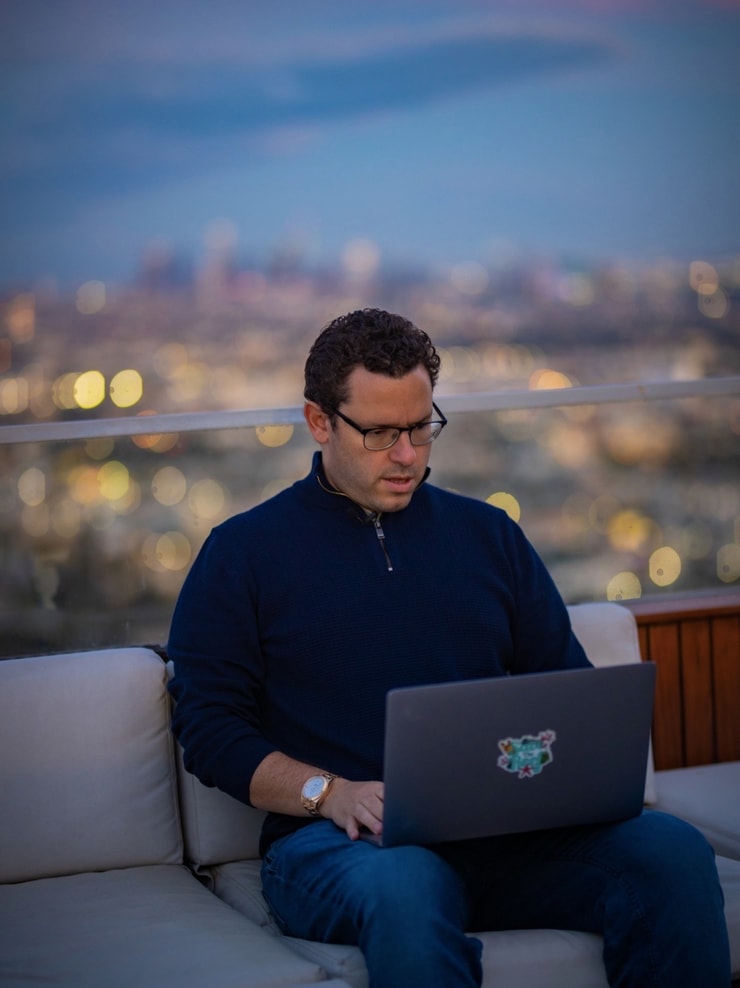Day trading is all about buying and selling financial instruments within the same trading day. The goal is to cash in on short-term price movements for quick profits.
But let’s get real—day trading is tough. Only about 1-20% of day traders actually turn a profit. The successful ones? They prepare rigorously, just like I’ll show you in this guide.
So, what does it take to master day trading? Let’s break down the essentials, from preparation to execution.
Table of Contents
What Is Day Trading?
Day trading involves making trades within a single trading session. You’re not holding positions overnight; you’re in and out on the same business day. Many beginners mix this up with swing trading or long-term investing, but it’s a different beast.
Market volatility is your playground in day trading—it can make or break you. Understanding these fluctuations is crucial.
Day trading focuses on short-term price movements to capture quick profits. You need a strong charting platform and direct market access. You’re not just observing the market; you’re actively participating in the action.
The Basics of Day Trading
The aim of day trading is to profit from small price movements in highly liquid assets like stocks, futures, and forex. This strategy requires quick decisions, a deep understanding of the markets, and a fair amount of guts.
For newcomers, day trading might seem like some Wall Street magic trick, but it’s more accessible than you’d think. With the right tools, strategies, and mindset, anyone can dive into day trading. But remember, the potential for high rewards comes with high risks.
In my years of trading and teaching, I’ve seen many traders jump into day trading without proper preparation. Don’t be that guy. Let’s dive into what you need to know to get started the right way.
What Day Traders Do

2025 Millionaire Media, LLCEvery day when the stock market opens, thousands of stocks start moving. They tick up and down in price until trading finishes in the afternoon.
Day traders try to find the biggest movers and ride the momentum. They profit by buying and selling stocks and riding those short-term price movements. It all usually happens in one day — hence, day traders.
People drawn to the markets, the laptop lifestyle, and self-employment are often drawn to day trading … But what does it really take to pursue a career as a professional day trader in 2024? Before I answer that, let’s look at…
An Example of Day Trading
So, what’s a day trade look like? It’s pretty simple…
Here’s a hypothetical example:
You decide to keep a list of all the penny stocks that recently had big moves in price. Faraday Future Intelligent Electric Inc (NASDAQ: FFIE) is one of the tickers that pops up. This internet data play was a huge runner the week before. (Read more about former runners here.)
You add it to your stock watchlist. (Sign up for my FREE weekly watchlist here.) One morning you see the company’s made a big announcement. You think it’s enough to push the stock price up — at least in the short term.
You decide to purchase the stock at 17 cents per share after the market opens. The stock gradually moves up in price over the day, hitting a high of 25 cents by the afternoon.
Notice I mention a key indicator here: a company announcement. Check out this video for how company news — or even the anticipation of it — can move stocks:
There’s so much more that goes into deciding which stocks to day trade … But in a nutshell, day trading is entering and exiting a stock position within a single trading day. And I want to take a moment to answer a question I get a lot…
Is Day Trading For a Living Possible?
People love to ask me this question. They wonder if anyone can really make a career out of trading stocks day in, day out…
I can understand why some people are skeptical. There are so many fake ‘gurus’ and scammers out there. Plus, day trading for a living seems almost too good to be true …
Working from home, being your own boss, taking days off whenever you like, working from anywhere (when there’s not a global pandemic) … Not many careers are anything like this…
But, I’m living proof that you can make a living day trading — and live a fantastic life while doing it…
I’ve been making a living from the markets for over 20 years. I turned my $12,415 bar mitzvah money into over $1.65 million in college. Since then, I’ve made over $5 million in trading profits.**
These days, I donate my trading profits to charity.
I’m not the only one who can day trade for a living. I designed my Trading Challenge to teach students to be self-sufficient traders. Some of my top students have gone on to become millionaires** … Some even trade better than me. I think that’s the best compliment a teacher can get.
So, absolutely, learning how to day trade for a living is possible — if you’re prepared to work hard, study your butt off, and commit to the process.
Just starting on your trading journey? Read “The Complete Penny Stock Course” by my student Jamil. It’s a great overview of everything I teach and answers so many common newbie questions.
Time to move on to the…
Benefits and Challenges of Day Trading
Time for real talk. Let’s examine why day trading can be an amazing profession — even if it means you gotta work HARD.
If you learn to trade consistently, you could potentially have an amazing lifestyle…
Working for yourself, from almost anywhere, setting your schedule — it’s all determined by your own work ethic and abilities…
That’s what can come with the trading career, and I hope it excites you. I love trading penny stocks, and I love the life I get to live because of my success.
But what about the downside?
To be honest, the day trading success rate is pretty low. Somewhere around 90% of traders lose money. But that’s not as bad as it sounds…
To be honest, the average wannabe trader is a complete idiot. If you’ve found me, and you’re reading this blog, you’re probably looking for real information. That puts you ahead of so many traders.
And I’ll say it again — trading for a living requires a lot of hard work. And there’s no guarantee you’ll ever truly get it.
So yeah, there are the downsides. But ask any professional trader, they’ll almost all tell you it’s all worth it in the end. Now let’s look at…
How to Day Trade for a Living: 7 Pro Tips
If you’ve made it this far into this post, you’re probably starting to wonder if pursuing a trading career could be for you.
So what’s next?
Here’s a list of 7 tips for how to become a self-sufficient day trader in 2021 and day trade for a living.
1. Learn a Trading Strategy
You can’t just approach the market with guns blazing, buying and selling whatever looks hot.
If you try to trade like that, you can kiss your trading capital goodbye in no time at all…
You need to have a set trading strategy. You need to understand the process.
A strategy might be as simple as a classical chart pattern and only trading stocks with an uptrend in price…
Or a strategy could be more complex, like stocks hitting all-time-highs, with hot news, and huge buying pressure…
Your strategy can be as simple or as complicated as you’d like to make it.
Just make sure that you have one before you place your first trade. I use the Sykes Sliding Scale to determine if a trade suits my strategy.
2. Practice!
Trading is all about performance — like playing a sport or learning to play an instrument.
Think about it … If you want to get good at golf, what do you do? Practice hours and hours at the driving range.
If baseball’s your thing, you spend hours in the batting cage. If it’s music, what do you have to do? Practice!
It’s exactly the same in trading.
Being a skilled trader involves training your brain to pick up on stock patterns that happen all the time. You have to know what to do when stock prices are going wild. It takes time and a lot of practice to gain experience that will help you trade better.
You can practice trading in a number of ways…
First, there’s simply getting screen time. That’s where you sit in front of your trading screens and watch stocks. You see how they react at certain price levels or when big news stories hit.
You can also paper trade. That’s where you make fake trades with pretend money. It’s a way to test your strategy and get comfortable acting in real time as the markets move.
When you’re ready, you can start trading small. You can get the feel for small gains and how to cut losses quickly — that’s rule #1! And you’ll learn the psychological lessons that come with having real money at stake in the markets.
Whichever way you choose to practice, work to improve a little bit each day. That’s how you build your trading skills and your knowledge account. Maybe you’ll even be on your way to becoming my next top student.
More Breaking News
- KOS Shares Plummet: Buying Opportunity?
- QXO’s Bold Move: Deadline Extension and Market Impact
- Novo’s Legal Tangles: Stock Faces Heavy Pressure
3. Get Some Trading Capital
Ever heard the saying “it takes money to make money?”
That’s kinda true in trading. You need some capital in your account to buy and sell stocks. But you don’t need to start with big money.
You can start with a small amount of capital and let small gains add up…
For example, my millionaire student Tim Grittani started trading with just $1,500 in 2011. He recently surpassed over $11 million in profits!**
(**Students’ results are NOT typical. Roughly 90% of traders lose. Always remember trading is risky, and never risk more than you can afford.)
How’d he do it? He studied his butt off and made lots of trades. When he found consistency in his trades, he gradually increased his trading size. Most importantly, he stays humble and keeps learning.
So, if you want to start trading, build your knowledge account first. And when you’re ready, you can start with a small account.
For access to my 6,300+ video lessons, subscribe to Pennystocking Silver. That’s just one way you can learn from my 20+ years of experience day trading.
4. Choose the Right Broker
If you want to trade stocks, you need to open an account with a stock brokerage. Don’t worry — it’s a pretty quick and easy process.
But it’s important to understand that not all stock brokerage firms are equal.
You don’t want to put your precious capital into some shady, fly-by-night brokerage firm. It could go belly up next week and leave you wondering what happened to your deposit.
Repeat after me: I will only trade with reputable brokerage firms!
Reputable brokers are often located in the U.S., heavily regulated, and well-capitalized. These are usually safer places for your trading funds. Some are small but highly respected firms. Some are easily recognized, like TD Ameritrade and E-Trade.
They all have different account types, rules, minimum balance requirements, and fees. Take time to find the right one for you.
Need help finding the right brokerage account for your strategy and needs? This post has key broker pointers.
5. Get a Trading Mentor
Want to succeed as a trader as fast as humanly possible? Find a trading mentor.
Trading mentors can help you shorten your learning curve. They can help you avoid a lot of headaches and dead ends in your trading journey.
They can help show you the way and skip over the most common trading mistakes because they’ve made them before.
I have to warn you though … Be careful who you pick as your mentor. The trader education industry is full of snake oil sellers who couldn’t trade their way out of a paper bag.
That’s one of the reasons I created Profit.ly. It’s a website that allows traders to enter, track, and verify every single trade. You can see me there with over $5 million in verified trading profits.**
Looking for your trading mentor? Apply for my Trading Challenge.
You get access to everything I know about trading penny stocks — including all my DVDs, the best chat room, and regular webinars with me and my top students. And there’s so much more.
Think you’ve got what it takes to become my next top student? Apply for my Trading Challenge. No lazy losers, though.
6. Master your Trading Platform
You have to use the best tools. Your trading platform is everything. Master your trading platform.
What’s a trading platform? It’s software that gives you access to charts, quotes, scanners, and all things stocks.
It’s how you can find the best stocks for your strategy. You can use it to build and maintain watchlists. And it’s also where you can catch social media buzz on stocks — if you use the right platform.
I use StocksToTrade every day. I helped design it, so the built-in scans fit my strategies for day trading low-priced stocks. This tool is incredible. You can check out StocksToTrade with a 14-day trial for just $7.
Back in the day, premarket prep was way more work. Be thankful you’re starting trading in 2021 … It’s so much easier to research and trade stocks. But know what you’re getting into. For the record, I trade with these rules.
7. Work on Your Trading Psychology
What do most newbie traders struggle with the most?
It’s not finding trading setups or the right strategy…
One of the biggest challenges for traders is trading psychology and having the right mindset.
Trading is HARD. And it’s not as simple as winning trade = good or losing trade = bad.
It’s about the process. It’s finding consistency and knowing how to cut losses.
Your mindset and how you approach the market every day is crucial. It’s how you develop discipline.
Check out this post for tips on how to develop your trader mindset.
How to Day Trade for a Living: The Bottom Line
I think learning how to day trade is great for 2021. You have access to so many resources now. The internet’s changed everything.
And you can choose your level of commitment. I have tons of free videos on YouTube. You can subscribe to Pennystocking Silver for access to thousands of videos and learn from the past (yes, it matters!). When you’re really ready to commit, you can apply for my Trading Challenge.
The steps in this post can give you a powerful head start if you think you’re ready to learn how to day trade for a living.
Ready to step your game up and shorten your learning curve? Apply for my Trading Challenge today.
What do you think? How willing are you to put in the work to learn how to day trade? Leave a comment below!
Day Trading for a Living FAQs
What Percentage of Day Traders Make Money?
The harsh reality is that most retail traders lose money. If you’re serious about becoming a day trader, understand it will take a ton of work and a long time. It’s gotta be a passion for you so you stay motivated to keep learning.
Does the Average Day Trader Make Money?
Unfortunately, no. Day trading requires serious dedication and skill, and most people don’t invest the time and effort needed to make it work for them.
How Do I Become a Day Trader if I’m Starting with $100?
Starting as a day trader with just $100 is challenging but doable. You need to find a broker with a low account minimum. Be prepared to trade small, focusing on low-priced penny stocks to practice and gradually build your account.
What Are the Margin Requirements for Day Traders?
Margin requirements for day traders are set by regulatory authorities and brokerages to manage the risk of using leverage. Typically, day traders need to maintain at least $25,000 in their brokerage accounts to trade on margin. This rule ensures traders have enough capital to cover potential losses. Leverage can amplify both gains and losses, so it’s crucial to understand and respect these requirements. My experience shows that following margin rules is key to managing risk and protecting your capital.
What Is Day Trading’s Buying Power?
Day trading’s buying power is the capital a trader can leverage to buy securities. Brokerages often offer up to four times the trader’s maintenance margin excess. This increased buying power lets traders take larger positions and potentially make higher profits. However, it also raises the risk of substantial losses. Throughout my career, I’ve stressed the importance of using leverage wisely and ensuring each trade fits within your risk tolerance.
What Is the Success Rate of Day Traders?
The success rate of day traders varies widely, with only a small percentage consistently making profits. Many enter the market with high hopes but fail due to a lack of preparation, discipline, or market understanding. My years of trading and teaching have highlighted the importance of education, experience, and emotional control in achieving success. Day trading can be profitable, but it requires dedication, hard work, and learning from mistakes.













Leave a reply